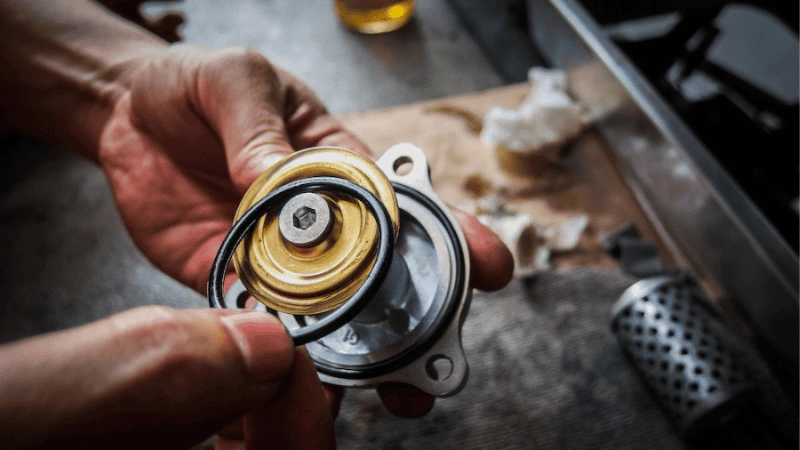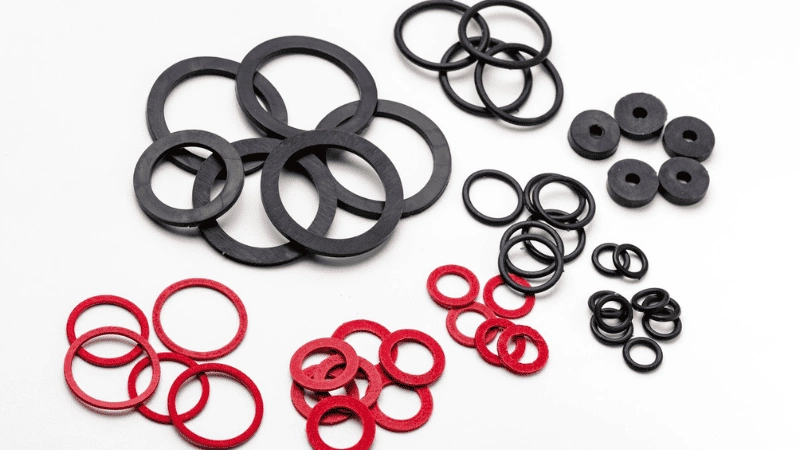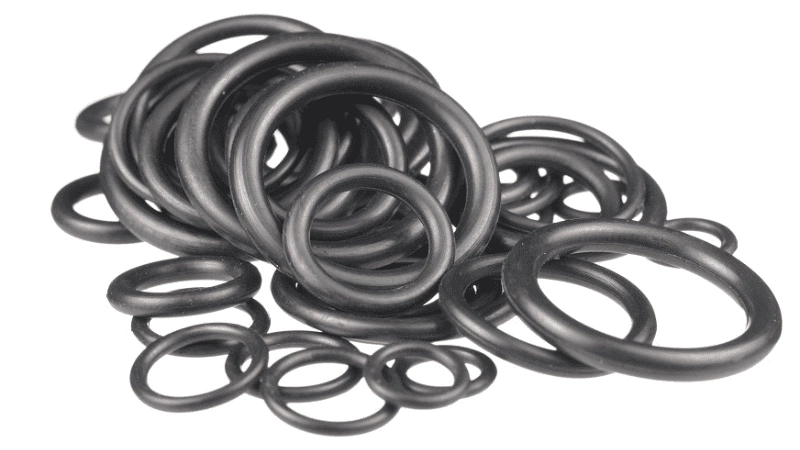How will you ensure that Viton o-rings will perform well? You have to understand its properties.
This article will focus on understanding the specific properties of Viton o-rings so you’ll know where it can perform better.

The Origin of Viton as a Material
Viton is a creation of Chemours (previously DuPont). It possesses a specific blend of fluoroethylene kilometer. That means it has high fluorine bonding qualities that make it highly oxidative. It also gives the o-ring high resistance to both harsh chemicals mineral acids, and extreme temperatures.
When trying to learn more about Viton as a material, you’ll always encounter other terms like FKM or FPM. All these terms refer to the same thing.
Viton™ is the official trademark name of DuPont for their product. FKM is the American reference for their standard of Fluro-Elastomer. If the material has 80% Fluoro-Elastomer, you refer to them as FKM, following the standards of ASTM D1418. It becomes FFKM (perfluoroelastomer) if the material has more than 80% Fluoro-Elastomer. This means it can withstand temperatures of up to 325°C.
On the other hand, FPM is the DIN/ISO international abbreviation for Fluoro-Elastomer (1629 standard). It has the same properties as the American FKM.
Although FKM and FPM are references to the same material, it’s Viton that people often use.

Inquire About Our Silicone and Plastic Products!
What Makes Viton an Ideal Material for O-rings?
Viton is ideal for o-rings because it prevents liquid or gas from escaping. It’s one of the most fluid-resistant materials on the market. Because of excellent chemical resistance and its elastic properties, Viton allows the o-ring to mold itself into the groove where it’s in. This blocks the escape path to keep any liquid or gas from leaking.
This makes it ideal for molding and extruded purposes.
As a material, Viton contains unique properties from the combination of synthetic rubber and fluoropolymer. It possesses excellent resistance and incredible mechanical strength if you compare it with other elastomers. It can maintain its original shape and elasticity even if exposed to high temperatures, oils, fuels, other fluids, chemicals, and even minerals.
Here are some of the qualities of Viton that make it an excellent material for o-rings.
- Temperature resistance. Viton o-rings can seal in extreme temperatures between -20°C to 210°C. The Viton material becomes rigid and inflexible when it goes beyond this temperature range.
- Chemical resistance. Viton seals have properties that allow them to suit various applications. It can withstand exposure to chemicals like acids, silicone fluids, petroleum oils, lubricants, and halogenated hydrocarbon elements like trichloroethylene or carbon tetrachloride.
- Extreme Weatherability. You can expose Viton o-rings to various elements like UV rays, oxidation, mold, and fungus – and it won’t compromise its ability to fill escape paths and avoid leakages.

Let’s take a look at Viton compared to other o-ring materials.
| / | VITON | NITRILE | SILICONE | EPDM |
|---|
Inquire About Our Silicone and Plastic Products!
What are Viton O-rings Used for?
Viton o-rings are ideal for special applications with excellent tolerance for exposure to extreme temperatures, various harsh chemicals, and severe conditions. This is why it’s mainly used in aerospace, the automotive industries, and industrial spaces.
Viton has incredible fuel and heat resistance properties. That means it’s not likely to burn even after exposure to extreme temperatures like hot oil, hot water, low temperatures, etc.
Since its flexibility and tensile strength properties are high, it’s also ideal for appliances and medical devices. It’s also gaining popularity in chemical industries, food processing, and pharmaceutical and medical applications.
When selecting a Viton o-ring, you can customize its properties for better resistance by specifying its curing method, fluorine content, and viscosity. This process ensures you obtain the optimal resistance from a Viton o-ring that meets your specific application needs.
If you require higher chemical resistance, opt for a material with higher fluorine content, while selecting low-viscosity o-rings is ideal for extrusion purposes. Through this approach, you can work with a huge variety of Viton o-ring manufacturers to produce o-rings suited for specific applications, making it an excellent choice for any business or medical industry that demands high-quality materials.

The Pros and Cons of Viton O-rings
Viton o-rings aren’t an all-around sealing product. This is why it has its share of advantages and disadvantages.
Pros
Among the benefits of using Viton o-rings include the following:
- Ability to withstand extremely high temperatures of up to 400°F to 600°F.
- It can maintain its integrity despite exposure to various chemicals like acids, fluids, gasses, oils, and even aromatic or halogenated hydrocarbons.
- Retains sealing abilities even through UV exposure, weather, fungus, molds, and oxidation.
Cons
Viton o-rings aren’t entirely perfect. It also has disadvantages that you should be aware of.
- It’s not ideal for shallow temperatures. The most it can withstand is 10°F to -10°F (-12°C to -23°C).
- More expensive if you compare it to other rubber materials like nitrile rubber.

Inquire About Our Silicone and Plastic Products!
Conclusion
Viton o-rings offer excellent sealing capabilities. But before you choose it as your o-ring, ensure you understand the specific properties that make it an excellent sealing product. This will help you determine if it’s the correct o-ring for your unique application.
Buy High-Quality Viton O-rings from Hongju
In case you need a specific o-ring, Honju Silicone can help manufacture the right sealing product for you. Just provide the details of your design and requirements. Our experienced team of experts will help create the correct Viton o-ring for you.
Get in touch with us so we can discuss your order. Once the details are final, you’ll get a fair quote as soon as possible.